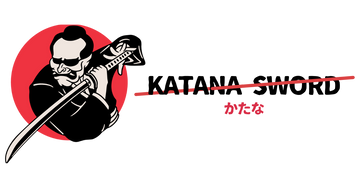Definition of Men-yoroi
The Men Yoroi is a protective gear attached to the armor of a Samurai to protect the face. It is said to have first appeared in the late Heian period (794-1185). It then became very popular from the end of the Muromachi period (1333-1573) to the Azuchi-Momoyama period (1573-1584).
During this period, "toseigusoku", a type of armor that was both mobile and strong, appeared. Like the "toseigusoku", which were made by the warlords of the Warring States period, a variety of men-yoroi were also produced.
Here we will explain the basics of men-yoroi.
Men-yoroi : presentation
Although its use spread from the end of the Muromachi period (1333-1573) to the Azuchi-Momoyama period (1573-1584), it has a surprisingly long history, and it is believed that happuri masks were used as early as the end of the Heian period (794-1185). However, it was not until the Nanbokucho period (1392-1644) that the unique development of men-yoroi began. It is said that these types of armors are related to the masks used in Sarugaku (Noh play), which was created in the Muromachi period (1336-1573).
The characteristic of these armors, such as the "cheeks under the eyes" and the "full masks", which cover most of the face except the eyes, is that they themselves have rich facial expressions.
These armors also acted as "masks" on the battlefield, as the wearer could awaken his fighting spirit by wearing a heroic expression, or confuse the enemy by wearing a laughing face, which was inappropriate for the battlefield.
Types of men-Yoroi
There are five main types of men-yoroi :
- happuri (protects the forehead and cheeks)
- the Hanbō (protects the area below the nose up to the chin)
- the Menpō (protects the nose up to the chin)
- the mengu (protects the cheeks)
- the Somen (complete protection of the face)
Happuri
Happuri has the longest history. It is said to have appeared at the end of the Heian period (794-1185) and is mentioned in the "Hogen Monogatari (Tales of Hogen)", which describes the events of the "Hogen Rebellion", and in the "Taiheiki", a military chronicle of the Nanbokucho period (1644-1644).
Although it declined after the Muromachi period (1333-1573), its reproduction became popular during the Edo period (1603-1867), when nostalgia for the past was on the rise.
Most of them were made of iron, and it is said that some happuri were made of leather and had their surface covered with lacquer.
Some picture scrolls also show happuri made of "egawa" (deer skin with a stencil painted pattern), which suggests that various decorations were added.
Hanbō
The hanbō is a mask covering both cheeks and the chin. It does not have a nose. It protects the throat area. The traditional hanbō was attached to the nodowa, a small piece of armor to cover the space between the throat and the upper chest plate,
Types of hanbō include the "sarubou," the "tsubakurobou," and the "kaga bukou." Some types of hanbō were made with a mouth, while others were made without a mouth.
The kaga hanbō are usually the smallest of the hanbō and are also called "chin-atsu", as they were shaped to protect only the chin.
Mene no shita boo (cheek under the eyes)
The cheek under the eye is the cheek that is with the nose. The difference between the above mentioned half cheek and the under eye cheek is the presence or absence of the nose.
The oldest surviving under-eye cheek was made in the early Muromachi period. Its most significant feature is its expressive expression.
As these were used on the battlefield, most of them are "ketsusei-men", which have a vigorous and angry expression. The material used for these masks was mainly iron, and leather was often used for the masks.
Most of them were made of iron, but some were made of leather. Some noses were detachable, while others were attached as is, and some had ears, while others did not. A beard was planted around the mouth to express martial dignity.
The reason for the open mouth on the cheeks, under the eyes, is to facilitate breathing and vocalization on the battlefield. Also, by eliminating the area above the eyes, the weight of the figure was reduced.
Mengu (masked cheeks) are becoming increasingly popular as works of art, as they are produced using advanced engraving techniques, but we can also see that the functionality of these masked cheeks (kogusoku) was also emphasized in their function as weapons.
Somen
There are two types of somen: one with a nose and one without.
By covering the wearer without a gap, this armor can be said to be highly protective.
However, when worn in actual combat, the somen were heavier than necessary and reduced visibility, making their usefulness questionable. For this reason, it is said that the use of masks did not become widespread.
During the Edo period (1603-1867), when the country entered a period of peace and tranquility without war, gunsmiths competed to produce highly decorative total masks by hammering the iron or adding modifications to the wrinkles. They became popular not as armor but as works of art.

























